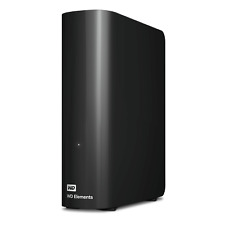-
Senior Member
registered user
Inserting kernel modules for kvm and booting the MBR in a kvm VM.
There may be problems with kvm kernel modules not being loaded. There should be two modules loaded, kvm and either kvm-intel or kvm-amd. If you don't know the processor type, and load status just look at the contents of /proc/cpuinfo and output of lsmod, e.g. by using
Code:
less /proc/cpuinfo
lsmod | grep 'kvm'
If there are no kvm modules loaded, use modprobe to insert them, in the Intel case:
Code:
sudo modprobe kvm && modprobe kvm-intel
A useful feature of kvm is that it can be used to run different OSes installed on the computer in a VM. This can be handy for lots of uses. Using GRUB, this command will give me GRUB's boot menu in a window:
Code:
sudo kvm -hda /dev/sda -m 1024 &
And from the boot screen, pick the OS version to boot. If you are running 32 bits kernel, 64 bits OS versions of course won't work.
The problem can be if different installs mount the same partitions rw, and insist on writing to them. But running Knoppix from a separate partition from what you are using can work just fine. You can do all kinds of administrative work in such a window, I even ran a DVD remastering there once. (The objection that DVD remastering takes a lot of time - if it turns out to be correct - becomes kind of moot when you can du it as a background process in a VM.)
 Posting Permissions
Posting Permissions
- You may not post new threads
- You may not post replies
- You may not post attachments
- You may not edit your posts
-
Forum Rules


WD HDD Ultrastar DC HC520 HUH721212AL4205 12TB 3.5" SAS Server Hard Disk Drive
$45.35

Seagate Exos 7E10 ST2000NM000B 2TB 7200RPM SATA 6.0Gb/s 3.5" Internal Hard Drive
$29.99

WD 16TB Elements Desktop, Certified Refurbished Hard Drive - RWDBWLG0160HBK-NESN
$209.99

Western Digital WD4000FYYZ RE 4TB 7200 RPM 64MB Cache SATA 6Gb/s 3.5" Hard Drive
$28.52

HGST Ultrastar DC HC520 12TB SATA 6Gb 256MB 3.5" Enterprise HDD- HUH721212ALE601
$82.99

HP 4TB 3.5" 12Gb/s 7.2K SAS Hard Drive P/N: 793674-001 / 803634-001 / 695597-004
$13.99

HGST Ultrastar HE10 HUH721010ALE600 10TB SATA 6Gb/s 7200RPM 3.5" Enterprise HDD
$78.99

Seagate Exos X14 12TB SATA6Gb/s 7200RPM 3.5" Enterprise Hard Drive ST12000NM0558
$109.95

HDD 3.5" SATA Hard Drive with Windows 7/Win 10 Installed Legacy
$35.99

Western Digital Gold Enterprise 4TB,7200 RPM Internal Hard Disk Drive WD4002FYYZ
$39.95



 Reply With Quote
Reply With Quote










